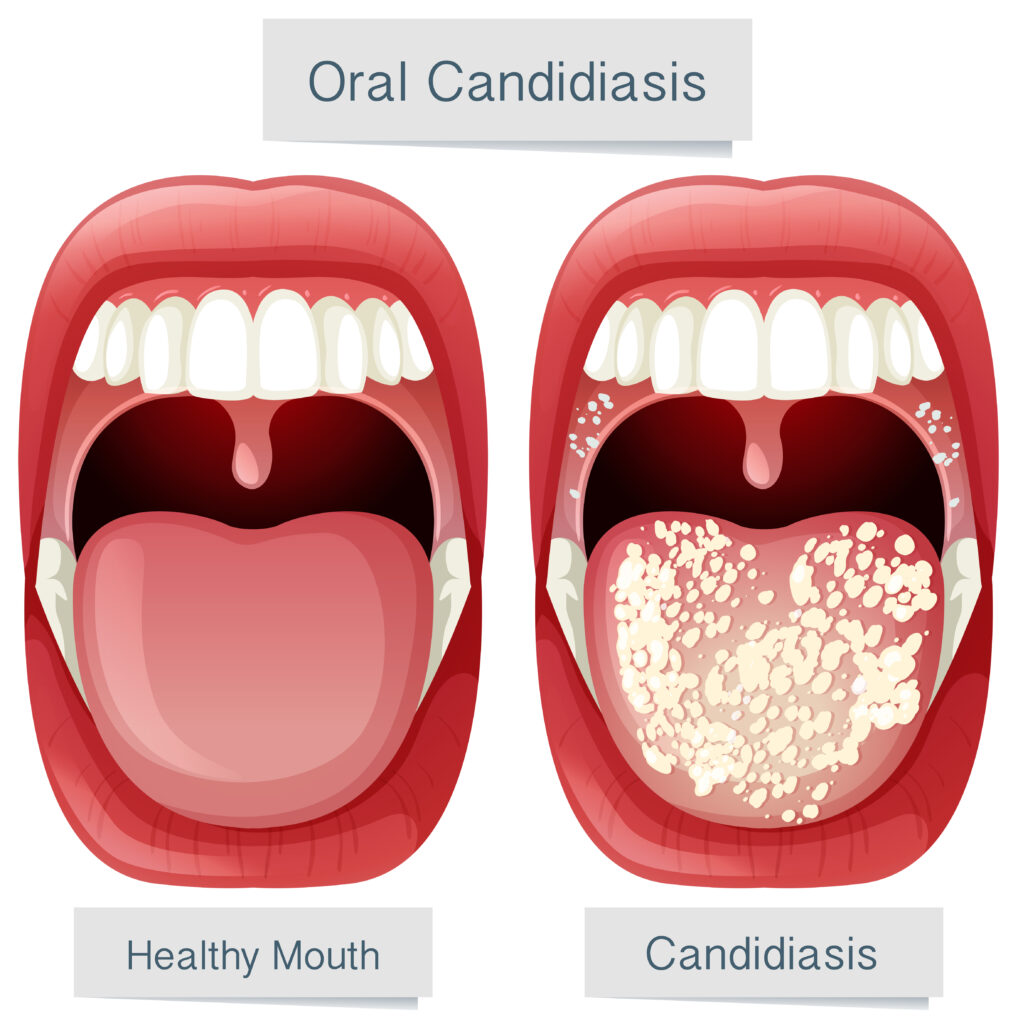Oral Thrush

Oral thrush, also known as oral candidiasis, is a fungal infection caused by Candida albicans, a type of yeast that commonly resides in the mouth. It typically occurs when the balance of microorganisms in the mouth is disrupted, leading to an overgrowth of Candida fungus.
Symptoms of oral thrush include the presence of creamy white lesions or patches on the tongue, inner cheeks, roof of the mouth, gums, or tonsils. These lesions might appear slightly raised and can often be wiped away, leaving red, inflamed areas underneath. In some cases, oral thrush can cause discomfort, a cottony feeling in the mouth, altered taste sensation, or difficulty swallowing.
Several factors contribute to the development of oral thrush. Weakened immune systems, such as those in individuals undergoing chemotherapy, using corticosteroids, or living with conditions like HIV/AIDS, diabetes, or autoimmune diseases, are more susceptible to oral thrush.
Additionally, the use of antibiotics or medications that disrupt the natural balance of oral microflora can lead to fungal overgrowth.
Diagnosis:
- Visual Examination: Dentists look for white patches and signs of irritation.
- Swab or Tissue Sample: Collection for laboratory testing to confirm fungal infection.
- Medical History Review: Identifying predisposing factors such as immune conditions or medication use.
Solutions:
- Antifungal Medications: Oral rinses, lozenges, or topical treatments to eradicate the fungus.
- Improved Oral Hygiene: Thorough brushing, mouth rinses, and tongue cleaning to reduce oral bacteria.
- Managing Underlying Conditions: Treating immune system disorders or adjusting medications causing thrush.
- Probiotics: Supplements or foods to promote a healthy balance of oral flora.
Preventing oral thrush involves practicing good oral hygiene, avoiding unnecessary antibiotic use when not prescribed, and managing underlying health conditions. Regular dental check-ups allow for the early detection and management of oral thrush, ensuring optimal oral health.
Understanding the symptoms, risk factors, and necessary precautions empowers individuals to recognize and manage oral thrush effectively, promoting oral comfort and overall well-being.


